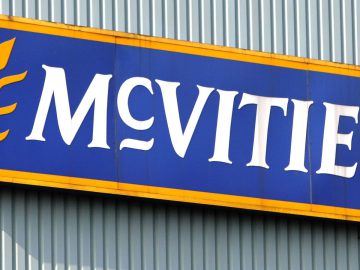We have heard about using GenAI to summarise and create different versions of an article. Here’s a news organisation that repackages several articles into one — and then sells that to an entirely new market.
Nikkei
This is the story of Nikkei, the Japanese publishing giant that produces 1,000 articles a day. Nikkei discovered a segment of its audience was interested in its news but not willing to pay the subscription fee of US$30 per month. These readers also found the average article on Nikkei.com difficult to read and too long and time-consuming.
Minutes by Nikkei is a GenAI-driven product that helps the giant Japanese publisher reach and monetise new audiences.
The solution was a condensed news product called Minutes by Nikkei, which took six months to build. It uses generative AI and proprietary algorithms to combine several articles into one, rewritten in an easy-to-understand style that highlights only the main points of the news.
It produces three such articles a day, which are then packaged as Minutes by Nikkei and cost US$7 a month. They are also produced as audio.
It is editors who select the initial pool of articles the GenAI works from, and editors also review the final product before it is published. “A close relationship between the editors and the development team is essential,” Seiya Shinhashi, the product manager in charge of Minutes, recently told the inaugural INMA Generative AI master class.
Nikkei had been concerned the new product could cannibalise its premium product, but this did not turn out to be the case because regular business readers were not satisfied with just three articles, Shinhashi said.
Master class attendees also heard about another case where GenAI is creating content that is being monetised effectively.
Stuff
Stuff, New Zealand’s largest media company, was grappling with a time-consuming manual process for pitching sponsored content and the high costs of paying freelancers.
Why not try automated content creation?
“We worked very closely with editorial to make sure that our ethics and principles within the commercial side of the business were very much founded and aligned with editorial principles in the newsroom,” said Matt Headland, managing director of brand connections at Stuff.
 Stuff uses GenAI to create sponsored content for topics such as real estate, motoring, and culture.
Stuff uses GenAI to create sponsored content for topics such as real estate, motoring, and culture.
Automated content appears on topics such as culture, motoring and real estate, which he said was “a huge vertical for us.”
There is still human interaction throughout the process, with staff editing the content, but AI tools speed the entire process up. In the month of March, Stuff saved 60 hours by using AI.
“Even though it has driven efficiencies within the team, we can very much scale up our revenue because we’ve got more output,” Headland said.
It was initially hard to get staff to adopt the tools because they were concerned about technology taking over their roles, Headland said: “It did take some time for people to embrace the tools that we were putting in place. But once the team saw the benefit and the scale of the content, and also the revenue that it produced, people really jumped on board.
“It was nothing but successful.”
Stuff is also using GenAI to create presentations for “a couple of hundred people” working on sales teams, cutting the amount of time taken to produce a presentation to an hour from a week.
“We are now seeing revenue growth from this as well because our sales team is now able to spend more time talking to their customers and solving their problems rather than sitting and creating presentations.”
If you’d like to subscribe to my bi-weekly newsletter, INMA members can do so here.
YOU MUST BE A MEMBER TO ACCESS THIS CONTENT
Become An INMA Member or Log In
. . . . . . . . . . . . . . . . . . . . . . . . . . . . . . . . . . . . . . . . . . . . . . . . . . . . . . . . . . . . . . . . . . . . . . . . . . . . . . . . . . . . . . . . . . . . . . . . . . . . . . . . . . . . . . . . . . . . . . . . . . . . . . . . . . . . . . . . . . . . . . . . . . . . . . . . . . . . . . . . . . . . . . . . . . . . . . . . . . . . . . . . . . . . . . . . . . . . . . . . . . . . . . . . . . . . . . . . . . . . . . . . . . . . . . . . . . . . . . . . . . . . . . . . . . . . . . . . . . . . . . . . . . . . . . . . . . . . . . . . . . . . . . . . . . . . . . . . . . . . . . . . . . . . . . . . . . . . . . . . . . . . . . . . . . . . . . . . . . . . . . . . . . . . . . . . . . . . . . . . . . . . . . . . . . . . . . . . . . . . . . . . . . . . . . . . . . . . . . . . . . . . . . . . . . . . . . . . . . . . . . . . . . . . . . . . . . . . . . . . . . . . . . . . . . . . . . . . . . . . . . . . . . . . . . . . . . . . . . . . . . . . . . . . . . . . . . . . . . . .




